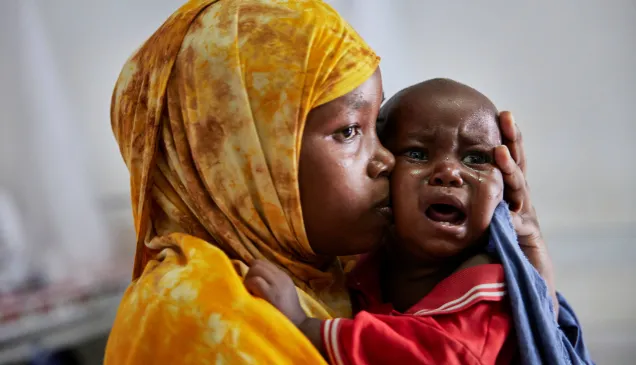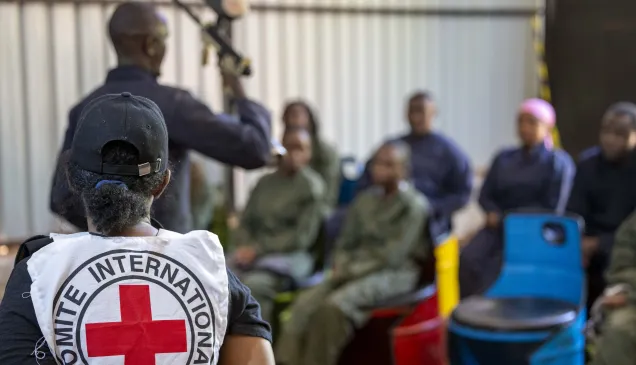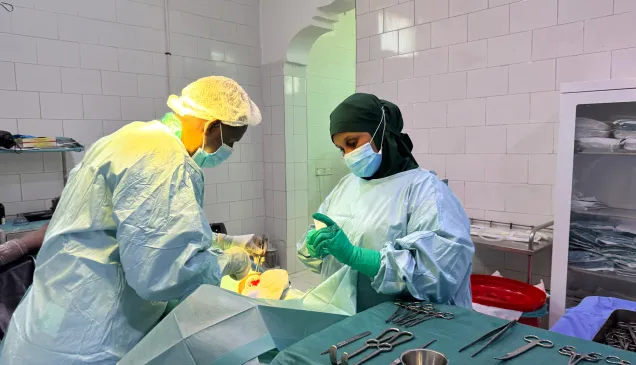Women and children in Dhagahyale village, 54km from Guri Ceel town, wait their turn to see the Somali Red Crescent Society mobile health team. Every Tuesday, residents from the village and the surrounding areas get the rare opportunity to access health services from the visiting SRCS mobile team.
On the road with Somalia’s Red Crescent mobile health clinics
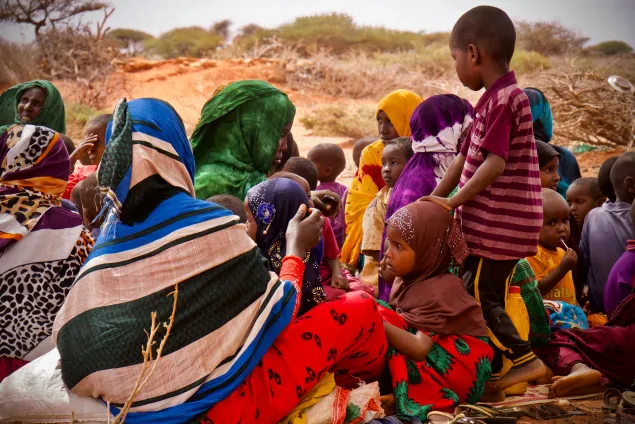
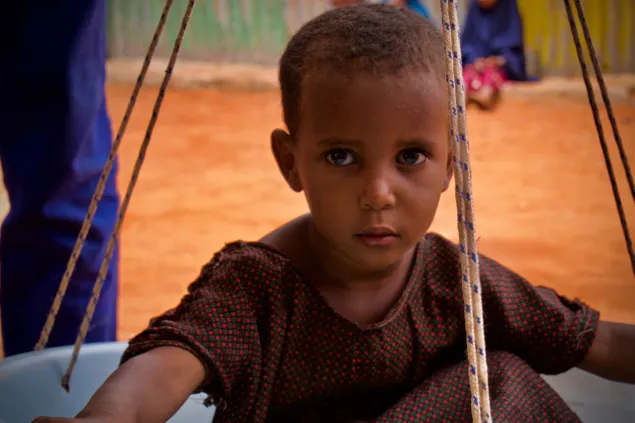
Anisa Abdullahi Ali, 3, at the screening area. All children have their weight, height and mid-upper arm circumference measured to detect malnutrition.
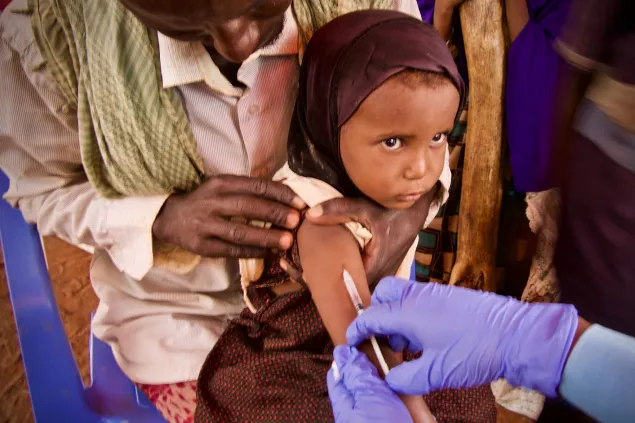
Brave heart! Anisa puts on a brave face as she got a measles jab without shedding a tear! Vaccinations are part of the vital services provided by the mobile health team.
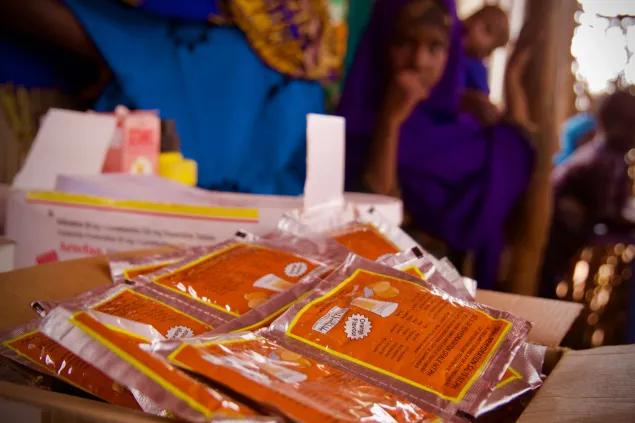
The ongoing drought has seen a spike in acute watery diarrhea cases especially within rural communities. Desperate conditions increase that likelihood when water is used from untreated sources. Oral re-hydration is given to the patients showing symptoms. The teams also raise awareness on hygiene and sanitation.
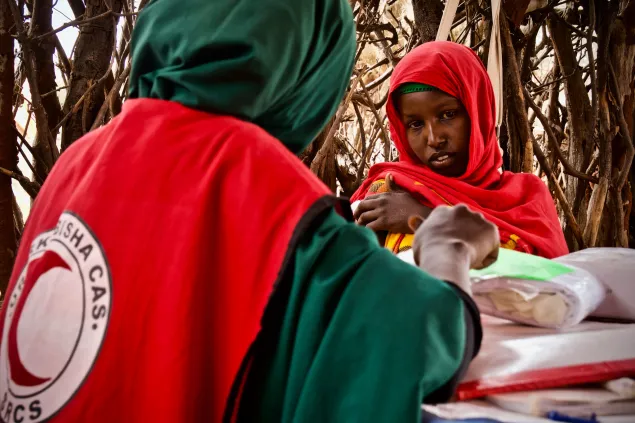
Nasra Jamal Ali, 18, is pregnant with her first child. She walked 14 kilometers to Dhagahyale to see the midwife, who is a member of the mobile health team that comes to the village every Tuesday. Antenatal and postnatal care form a huge part of the case load for this mobile health team. An average of 133 patients daily benefited from consultations in June.
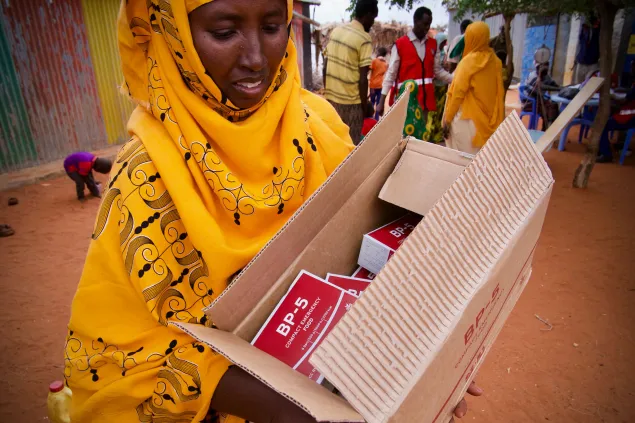
Levels of malnutrition in Somalia are highest among the rural communities who, having lost their animals to the drought, are facing food shortages. The mobile team runs an outpatient therapeutic program that supplies the mothers with high nutritious biscuits high in calories. Nasra Abukar, a mother of five, leaves with her box of supplies that will help her family stave off malnutrition.
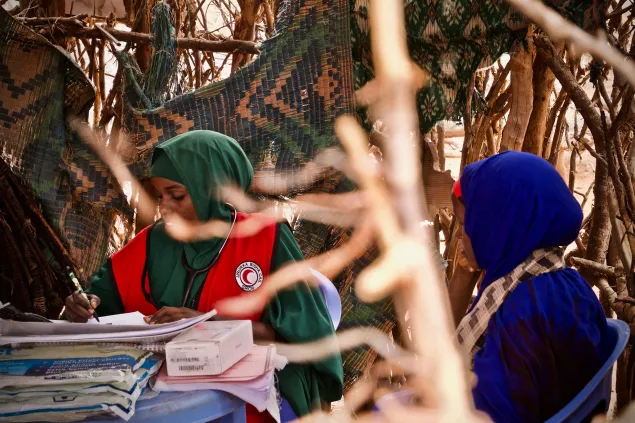
The SRCS mobile health teams are well received by the communities they seek to serve and are given space to carry out their activities. An ongoing consultation between a patient and the midwife with the level of privacy needed for exchanging sensitive and culturally delicate subjects like STDs.
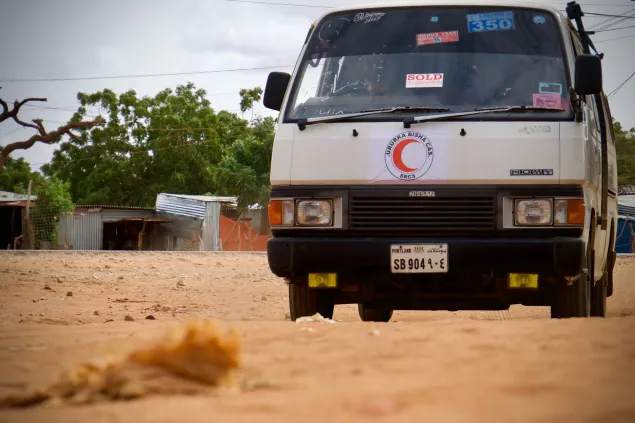
The SRCS mobile-health-team van heads to Ceel-Qorrah village, 48 kilometers south of Guri Ceel town. Five days a week the team goes to a specific rural area to deliver health services. Inside the van are a health team of six: the head nurse, an out-patient clinic officer, a midwife, a nurse who attends to children under age five, and three auxiliary nurses who help with dispensing the drugs and other services.
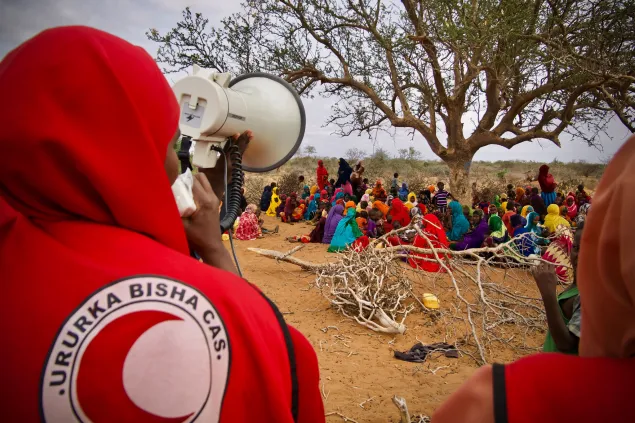
A health team member addressing women on the advantages of breastfeeding, vaccination, proper hygiene and sanitation practices. There’s a sudden burst in activity as people from surrounding villages congregate whenever the health team comes visiting.
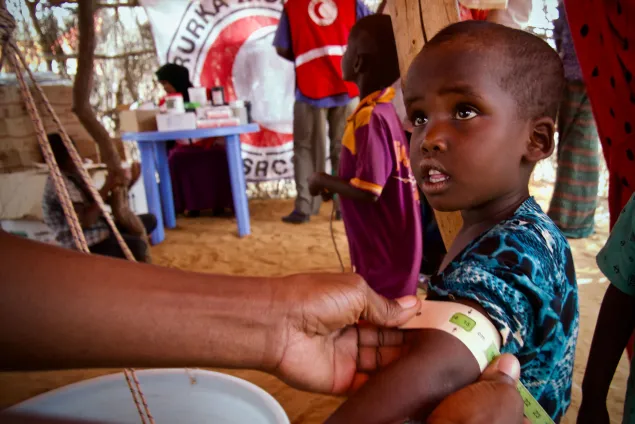
Maryan Maalin stares at the nurse as he reads her mid-upper arm circumference (MUAC). The measurement is an indicator of the level of malnutrition. Fortunately, she’s in the green. The colour red is at the extreme end of the colour chart and indicates severe acute malnutrition, a situation in which the child would require urgent life-saving treatment.
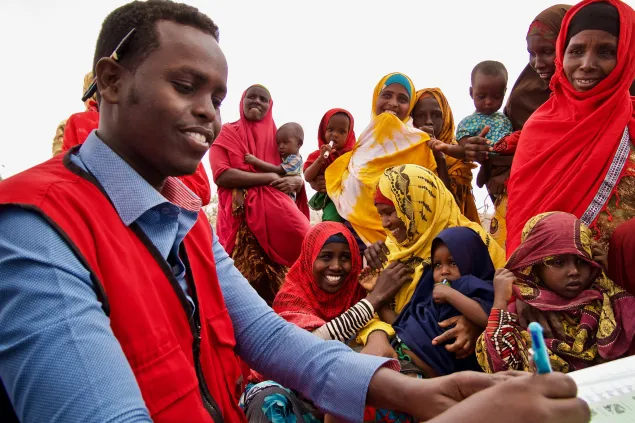
Ishaaq Moalim, one of the nurses of the SRCS mobile health team, shares a light moment with the women as he registers children for vaccination.
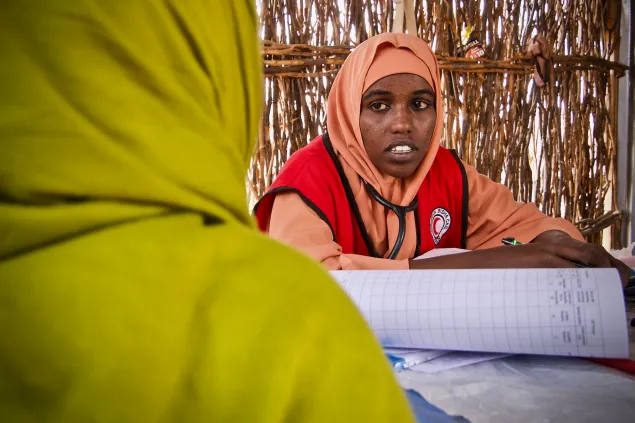
Nasteeho Abdulkadir is the midwife in the mobile health team plying southern Galgaduud region in Somalia.
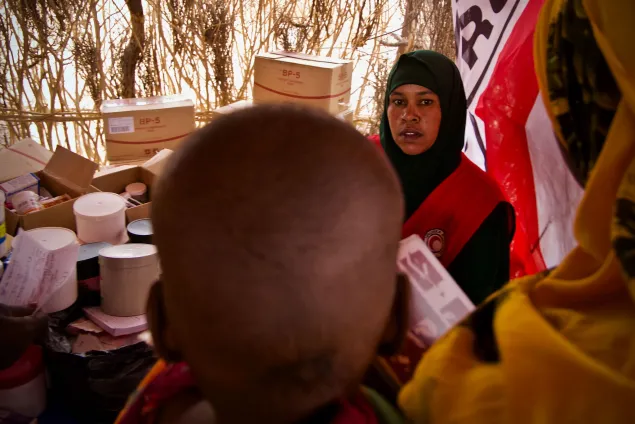
Shukri Hasan Hirsi handles the dispensing station. She hands patients the medication and explains to them the prescriptions. The medical supplies are provided by the International Committee of the Red Cross.
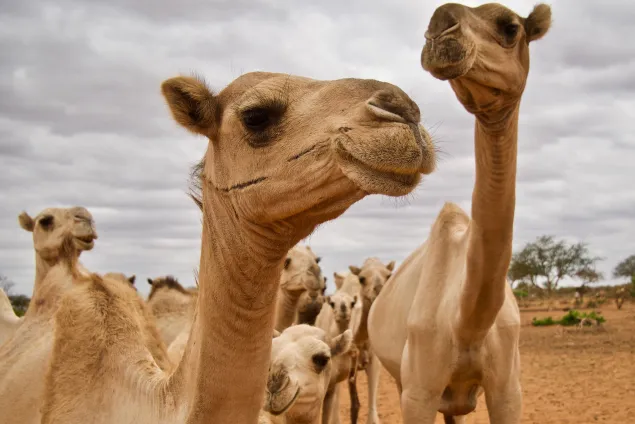
Camels at the water point in Ceel-Khorrah, 48 kilometers south of Guri Ceel in Galagauud region, Somalia. The centuries-old pastoral lifestyle that is dominant in the region is threatened by the ongoing drought in Somalia that has ravaged the lands and weakened scores of herds upon which rural communities rely for survival.
For Somalis living in rural areas of the country, access to health care services is hit or miss. Years of conflict and the centuries-long nomadic lifestyle have left many cut off from health services.
Yet these same people bear the brunt of the difficult drought conditions being experienced across the country. Fortunately today, even in the most isolated and remote villages some are able to access vital services with the help of the Somali Red Crescent Society (SRCS) mobile health teams.

